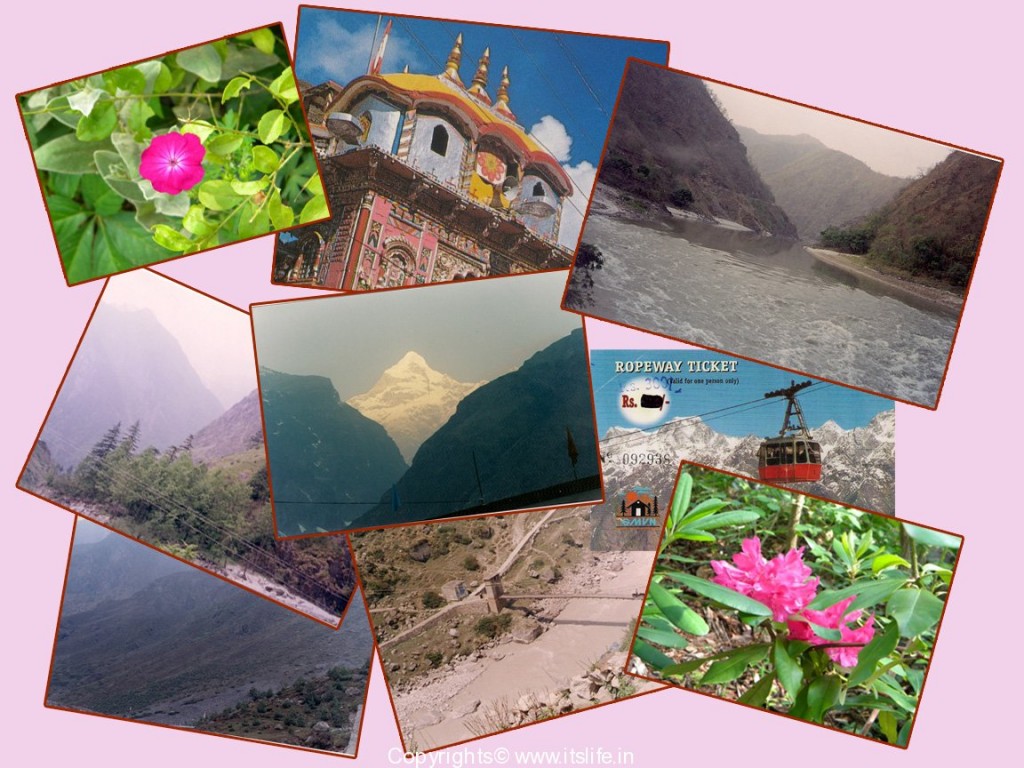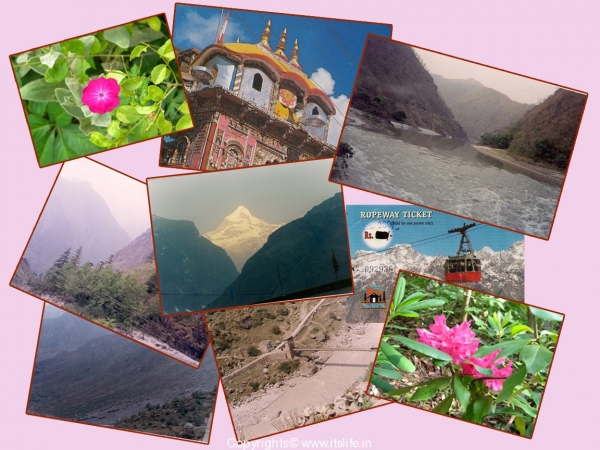My parents visited Uttarakhand in 1973 and I used to love hearing their experiences and the description of the different places they visited. My dad who was an avid photographer got all the pictures converted into slides and we would see them using a projector with rapt attention. You could only hear the whirring of the fan and the accompanying impromptu commentary by dad. When I visited Uttarakhand , I could relate to every single place and felt so connected and blessed to be touring this Land of Gods.
Uttarakhand state was carved out of Uttar Pradesh on 9th November 2000. The capital city is Dehradun and it shares its borders with China (Tibet), Nepal, Uttar Pradesh, Haryana and Himachal Pradesh. Uttarakhand is divided into Kumaon and Garhwal divisions.
The Kumaon division includes six districts.
Almora
Bageshwar
Champawat
Nainital
Pithoragarh
Udham Singh Nagar
The Garhwal division includes seven districts.
Dehradun
Haridwar
Tehri Garhwal
Uttarkashi
Chamoli
Pauri Garhwal (commonly known as Garhwal)
Rudraprayag
Uttarakhand means Northern Country in Sanskrit. This state is famous for Hindu pilgrimage. The Pauravas, Kushanas, Kunindas, Guptas, Katyuris, Raikas, Palas, the Chands, and Parmaras or Panwars and the British have ruled Uttarakhand over the years.
During the Vedic period, this region was the most preferred by the Sages and Monks. The Hindu epic Mahabharatha was written by Sage Veda Vyasa in this region near Mana village. Pandavas are believed to have trekked to this place.
The Himalayan mountain range is the youngest mountain range in the world and as you travel you come across different types of forests. In the foothills you find subtropical forests, moist deciduous forests and little higher you find montane grasslands, shrublands, meadows, coniferous forests and at high elevations you find the glaciers. It is all very fascinating and exciting.
The birth of rivers, Yamuna and Ganga is from the glaciers of Uttarakhand. The other tributaries are Mandakini, Alakananda, Bhageerathi and other streams flow alongside the roads with the snow peaked mountains as a background. Every single scene is worth taking a picture. As you climb higher the weather becomes colder and colder.
The official languages of this region are Hindi, Kumaoni, Garhwali, and Sanskrit. The people are simple and main occupation is irrigation. Now, tourism industry is flourishing giving rise to employment opportunities. Adventure tourism, which includes mountaineering, hiking, rock climbing, white water rafting etc., is gaining popularity here along with Eco tourism.
There are many educational institutions in the state. The state is well connected by road, rail and air. The best time to visit is during May – August.
Uttarakhand is divided into two divisions and they are Kumaon and Garhwal division. There are totally 13 districts between the two divisions.
State flower is Brahma Kamal, bird is Himalayan Monal, tree is Rhododendron and animal is Musk Deer.
Picture (above) – Rhododendron Flowers
Rivers
Many rivers criss cross this mountainous region fed from glaciers. The rivers are, Ganga, Yamuna, Bhagirathi, Kali, Gori, Alakananda, Kosi, Sharda, Ramganga, Dhauli Ganga, Mandakini, Pindar, Tonnes, Saryu and Bhilangana.
Cuisine
The Pahari / Mountain cuisine is delicious as well as nutritious and is prepared using the locally available raw ingredients. Some of the dishes are, Chudkani, Ras, Charanji, Dubuka, Bari Mungori, Naal bari, Aalu ka gutke, Kaapa, Paalak Tinri, Khire ka raita, Daarim ki khatai, Aam ka fajitha, Singal, Maal Pua, Besan Bhadela, and so on.
Festivals and Fairs
Uttarakhand celebrates a number of festivals. Some of the festivals celebrated in the Uttarakhand region are Basant Panchami, Bhitauli, Harela, Phool Dei, Batsavitri, Ganga Dusshera or Dasar, Dikar Puja, Olgia or Ghee Sankranti, Khatarua, Ghuian Ekadashi, Chhipla Jaat, Kandali, Janopunya, Kumaon Holi (including Khari Holi and Baithaki Holi) and Makar Sankranti (Ghughutia). A very popular fair known as Kumbha Mela is hosted every twelve years in Haridwar where millions of pilgrims from all over India and the world take part.
Folk Songs and Dances
Some of the folk songs and dances of Uttarakhand are Jhumallo, Thadya, Chaunfla, Rasau, Pandwana, Tandi, Bhadgeet, Jaagar, Chaanchri, Chholia, and so on.
Major Crops and Fruits
Major crops of this region are Rice, Wheat, Barley, Corn, Mandua, Hangora, and fruits like Apple, Leechi, Pulam, Naashpati, Maalta, and so on.
Best time to visit is from April to August and for skiing from December to February. I did not have a digital camera when I visited the place, so the pictures posted in Uttarakhand series are scanned copies of the printed photographs that I took.
Places of Interest in Uttarakhand –
|
Trekking Tracks and Adventure Sports
|
||
|---|---|---|
| Valley of flowers | Nanda Devi peak | Panch Kedar |
| Gangotri – Gaumukh Glacier | Gangotri – Gaumukh – Tapovan | Khatling Glacier |
| Har – Ki – Doon | Roop Kund | Kedarnath – Vasuki Tal |
| Uttarkashi – Dyara Buggyal | Dodital – Choptachatti | Kwari pass |
| White Water Rafting on Ganga | Kaudiyala Rafters Camp | Kaliganga Rafting |
|
Religious Places
|
||
| Temples at Jageshwar | Badrinath | Joshimutt |
| Kedarnath |
Yamunotri
|
Gangotri |
| Hemkund Sahib | Kailash Maan Sarovar | Nanda Devi temple |
| Rishikesh | Haridwar | Mindroling Monastery, Dehradun |
| Naina Devi | Manasa Devi Temple, Haridwar | Mana Village |
| Panchkedar | Panchbadri | Purnagiri |
| Chittai | Kaliyar Sharif | Nanakmatta Sahib |
|
Hill Stations
|
||
| Dehradun | Nainital | Auli |
| Srinagar | Almora | Pithoragarh |
| Chamoli | Mussoorie | Kausani |
| Bhimtal | Ranikhet | Pithoragarh |
|
Bird and Wild Life Sanctuaries
|
||
| Corbett National Park | Rajaji National park | Govind Pashu Vihar National Park |
| Gangotri National Park in Uttarkashi District | Nanda Devi National park | Ashok Sanctuary |
| Binsar Sanctuary | Kedarnath wildlife sanctuary | |
|
River Confluences and Glaciers
|
||
| Rudra Prayag | Karna Prayag | Deva Prayag |
| Vishnu Prayag | Nanda Prayag | Bunder Puunch Glacier |
| Gangotri Glacier | Khatling Glacier | Doonagiri Glacier |
| Dokrani Glacier | Kaphini Glacier | Ralam Glacier |
| Milam Glacier | Pindari Glacier | Namik Glacier |
| Sunderdhunga Glacier | ||



